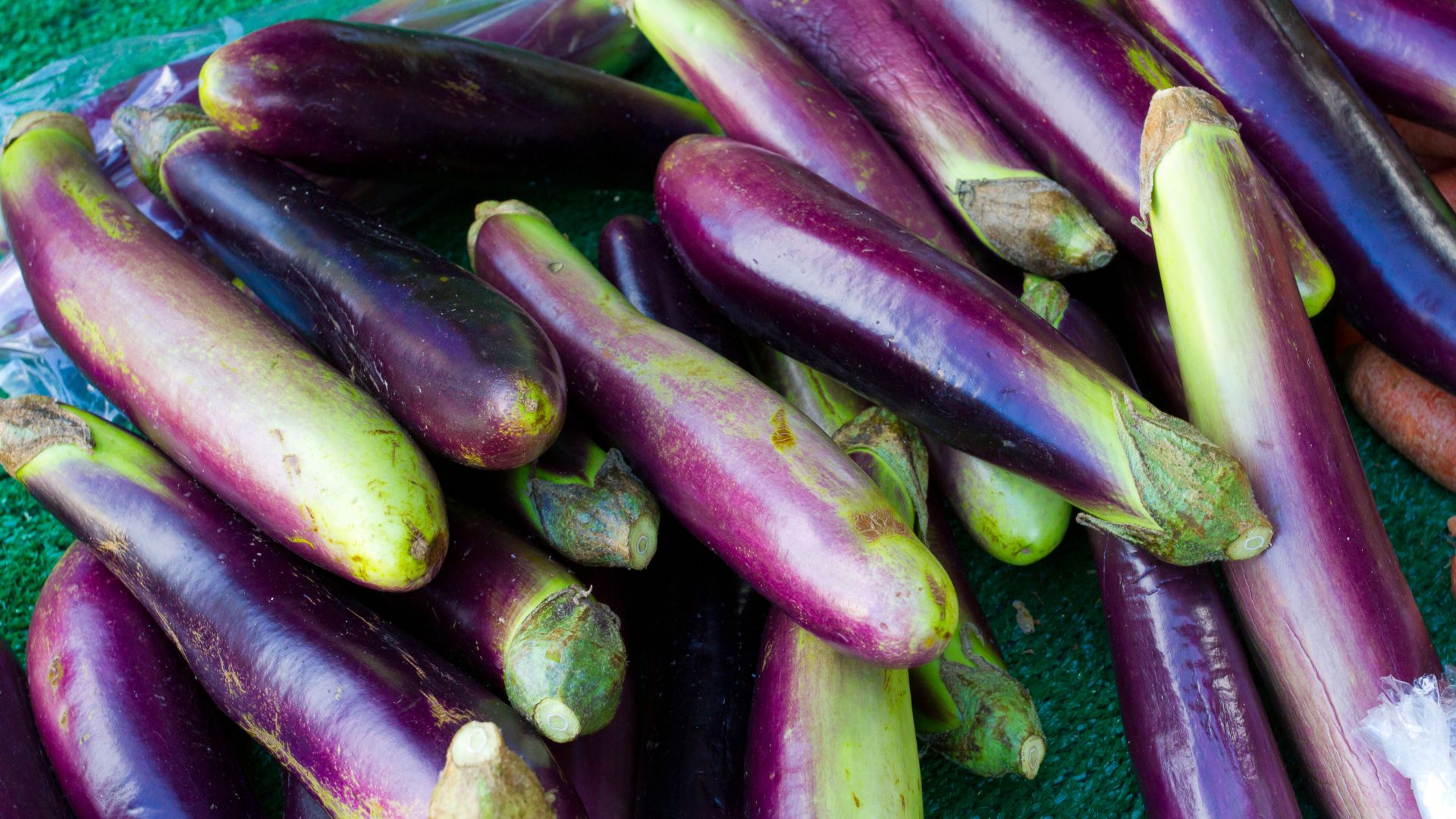
What Makes a Japanese Eggplant Different from Other Eggplants?
There are over 18 varieties of eggplants that exist in the world. The popular nightshade is well-known for its oblong shape, deep purple hue, and mild taste. However, there are variations on the more traditional eggplant, one of them being the Japanese eggplant.
Japanese eggplants offer a switch-up to traditional eggplant dishes, and they’re now available at Agri! Stay up-to-date on all of our seasonal listings by checking out our monthly specials.
What does a Japanese Eggplant Taste Like?
Japanese eggplants offer a sweeter, more tender, and more delicate taste than standard American eggplants. Because they’re smaller and longer, they possess fewer seeds. This rids them of that typical vegetal bitterness that you’ll find in some eggplant varieties.
Because of their gentle flavor, they do well with more assertive ingredients. Ginger, garlic, soy, and chili pair extremely well with Japanese eggplants. Don’t shy away from experimenting with bold flavors when cooking with Japanese eggplant! These flavors won’t dominate the eggplant, but rather, they’ll infuse the eggplant and create a palate-friendly experience. This is what makes the Japanese eggplant such a favorite amongst chefs and restaurateurs alike.
Japanese Eggplants vs. Other Varieties
Compared to other eggplant varieties, Japanese eggplants are the sweeter and milder of the bunch. Their flavor, texture, color, and shape are akin to a Chinese eggplant, and it can be hard to differentiate between the two. However, Japanese eggplants are slightly sweeter and less bitter.
Other eggplant varieties like the standard American Globe, Italian, green, graffiti, white, and fairytale are also quite popular. The rule of thumb is this: the larger amount of seeds, the greater likelihood of a bitter eggplant. In many cases, drying the eggplant with a paper towel will reduce moisture and put a hedge against the bitterness.
Japanese eggplants fare well in more versatile dishes, and shouldn’t necessarily be used as the main attraction. Its tenderness is meant to complement bold flavors, and it highlights meats like poultry or beef.
Japanese eggplants are also extremely easy to slice and dice. Because of their size and shape, they’re an extremely convenient vegetable to keep in your kitchen. Did you know Agri will even chop them for you? Our fresh-cut produce service will slice, dice, julienne, chop, and cut your produce so you don’t have to. No questions asked. Simply inquire about this service during your next order.
Where is the Japanese Eggplant Found?
Japanese eggplant plants are indigenous to Japan and India. They’ve been known to grow in this region for over 1500 years, and made their way to surrounding countries through trade and exploration. Even though Japanese eggplants have been around for centuries, they gained popularity and notoriety in the U.S. not so long ago. Now, we see them spanning multiple cultures and cuisines. Japanese eggplants can be grown virtually anywhere, under the right conditions.
Planting & Growing Japanese Eggplant
Japanese eggplants should be grown in the warmer months, as they do not fare well in frost or cold. The tender vegetable does well in warm soil, with a pH level of about 6 or 6.5. Water generously, weed often, and keep in full sunlight. When grown organically, they maintain their delightful flavor and bright purple hue.
Here’s What’s Fresh at Agri
Japanese eggplants are what’s fresh this season at Agri! We always keep stock of seasonal, high-quality, and fresh produce for your specialty grocery store or restaurant. We value our customers and the people we serve. This is why we aim to make your lives easier, and your businesses more efficient. We’re open 6 days a week, 24 hours a day. Don’t hesitate to reach out to us with questions, suggestions, or concerns.




Leave a Reply